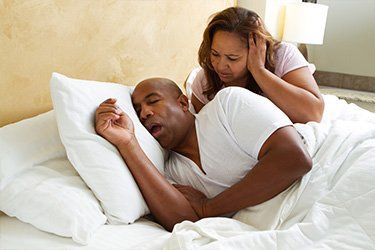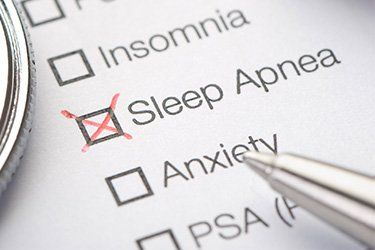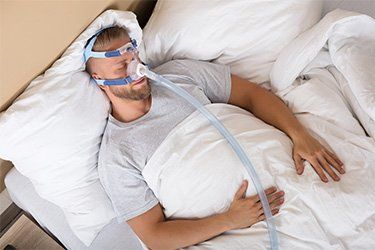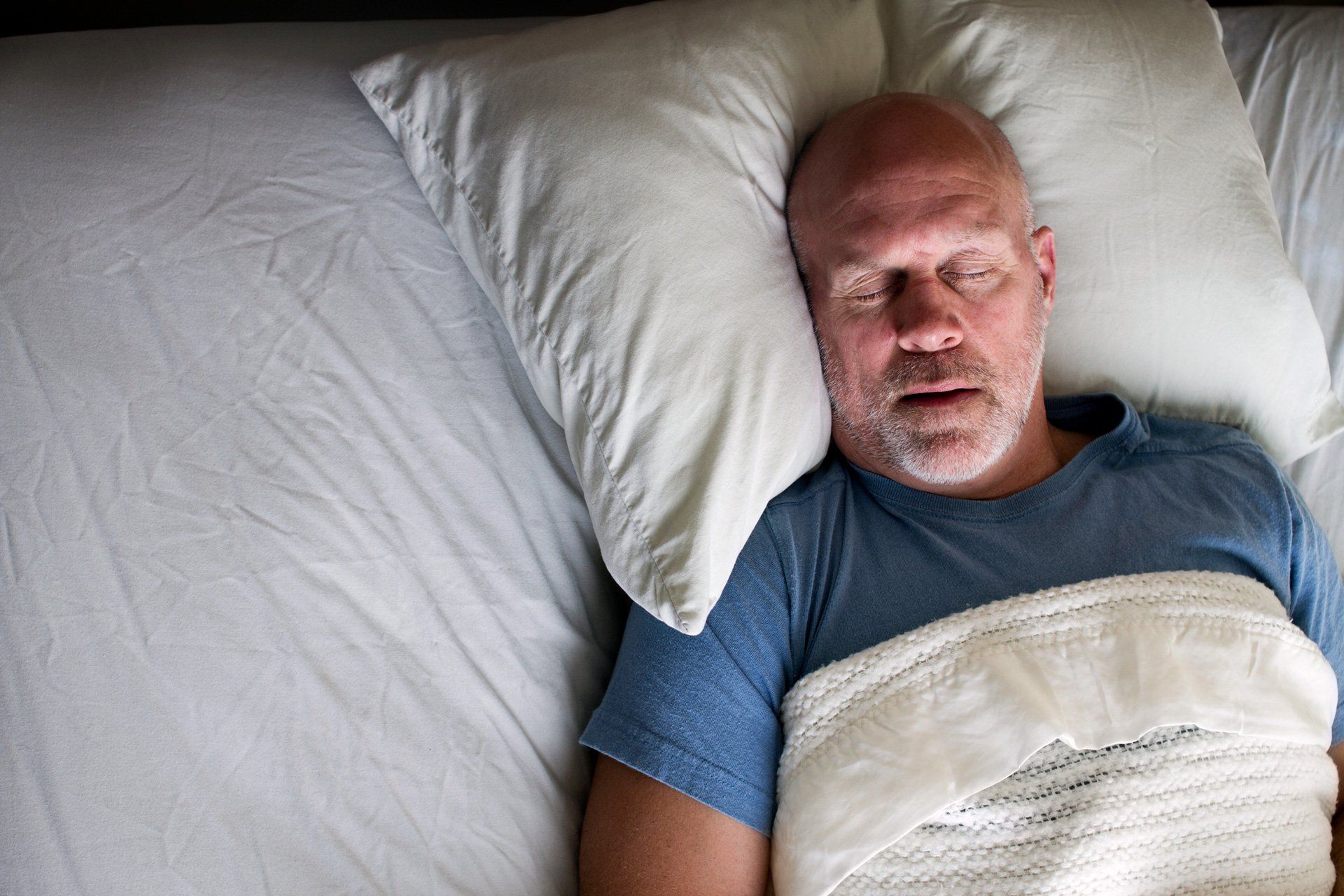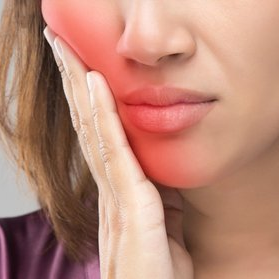Myofunctional Therapy for Sleep-Disordered Breathing
Orofacial myofunctional therapy is an effective treatment for sleep apnea that involves exercising the muscles in your face and mouth. Orofacial means “relating to the mouth and face.” The prefix myo- comes from a Greek word meaning “muscle,” and functional means “able to perform regular actions.” Thus orofacial myofunctional therapy is a treatment done to improve the function of the oral and facial muscles.
These muscles are used for proper bite, breathing, and facial posture, which is why it is important that they function properly. On this page, we’ll cover everything you need to know about myofunctional therapy and signs that you could benefit from this amazing treatment.
What Are Orofacial Myofunctional Disorders?
An
orofacial myofunctional disorder (OMD)
happens when specific muscles function abnormally or when muscle function isn’t coordinated. This can affect any of the muscles involved in chewing, swallowing, speech, and nasal breathing. If left untreated, orofacial myofunctional disorders can lead to oral health problems that can negatively affect your overall health and quality of life.
How Can We Help You?
Types of Orofacial Myofunctional Disorders
There are several common types of OMDs, including:
- Tongue thrust – occurs when the tongue pushes against or between the front teeth during swallowing instead of resting against the palate.
- Mouth breathing – the habit of breathing through the mouth instead of nasal breathing, especially during sleep.
- Incorrect swallowing patterns – occurs when the tongue does not make proper contact with the palate when swallowing, which can lead to feeding and speech difficulties.
- Poor posture in oral muscles – abnormal positioning of the tongue and facial muscles, which can lead to speech delays or disorders.
What Causes Orofacial Myofunctional Disorders?
There is no single condition or action that causes OMDs, but there are several known risk factors that can increase a person’s chance of developing this disorder. These common risk factors include:
- Chronic thumb sucking
- Using a pacifier or bottle longer than necessary
- Inflamed or blocked nasal passages due to allergies or swollen tonsils
- Chronic mouth breathing
- Excessive biting of lips or fingernails
- Bruxism (clenching or grinding of teeth, especially in sleep)
- Tongue tie (a condition that limits the tongue’s range of movement)
- Cleft lip or palate
- Genetic predisposition to OMDs
How Orofacial Myofunctional Disorders Can Impact Oral Health
When the muscles of the mouth and face do not function properly, it can lead to negative oral health effects. For example, untreated tongue thrust can lead to dental problems such as misaligned teeth or an open bite due to the constant pressure from the tongue against the teeth.
If left untreated, OMDs can also lead to unwanted health conditions such as:
- Dry mouth, which increases plaque development
- Tooth decay and gum disease
- Stress on the temporomandibular joints
- Altered facial appearance
- Sleep-disordered breathing patterns such as sleep apnea
Common Signs That Indicate Orofacial Myofunctional Disorders
There are several common signs that can indicate an OMD in children and adults, including:
- Persistent mouth breathing when asleep
- Insufficient habitual nasal breathing when awake
- Speech delays or disorders, especially a lisp
- Messy eating (or trouble eating)
- Dental conditions such as overbite or underbite
- Trouble pronouncing “j,” “s,” and “sh” sounds
- Persistent drooling in children or adults over 2 years old
- Trouble closing the lips when swallowing
- Tongue consistently sticking out past the teeth
- Asymmetrical facial skeletal growth
Orofacial Myofunctional Disorders and Sleep-Disordered Breathing
The muscles that can lead to OMDs are the same ones that can lead to sleep-disordered breathing conditions like obstructive sleep apnea. These include your tongue, jaw, and the muscles surrounding your airway in your throat. If your tongue and orofacial muscles are not functioning properly, they can close off your airway during sleep and cause obstructive sleep apnea (OSA).
How Do OMDs Contribute to Obstructive Sleep Apnea?
Not only can OMDs contribute to the development of sleep-disordered breathing conditions, but they can also increase the severity and persistence of sleep apnea. There are several ways that OMDs can contribute to new or worsening obstructive sleep apnea symptoms. Some of the most common ways include but are not limited to:
- Weak orofacial muscle tone – your orofacial muscles include the tongue, soft palate, and muscles in your throat. These muscles need to coordinate with one another, especially during sleep, to ensure your upper airway remains open for easy breathing. If these muscles are weak or uncoordinated, your upper airway can collapse or become partially obstructed, leading to OSA.
- Improper tongue position – the position (or posture) of your tongue during sleep is important because improper tongue position can contribute to reduced space in your throat. This can make breathing more difficult and increases your chances of your tongue obstructing your airway.
- Altered facial skeletal growth – untreated OMDs in children can actually change the way that the bones in their face grow. This can lead to a narrowing of the upper jaw, retracted lower jaw position, and other changes that can make the upper airway smaller and increase the risk of developing OSA.
How Does Orofacial Myofunctional Therapy Work?
The goal of orofacial myofunctional therapy is to improve the function of the orofacial muscles, correct any dysfunctional habits, and promote overall oral and facial health. This is done by working on a personalized treatment plan with a qualified therapy provider. You can think of it as a specialized type of physical therapy focused on your orofacial muscles.
The bulk of the treatment plan will include
myofunctional therapy exercises designed to strengthen and retrain the movement patterns of your orofacial muscles. These exercises are usually done at home on a schedule as prescribed by your myofunctional therapist, who will educate and guide you on the correct way to perform these exercises for optimum results. As needed, myofunctional therapy may also address behavioral habits such as thumb sucking in small children.
Can Orofacial Myofunctional Therapy Improve Obstructive Sleep Apnea Symptoms?
Yes,
recent studies have found that orofacial myofunctional therapy can be an effective treatment for obstructive sleep apnea syndrome, especially when combined with other proven treatments. When you receive orofacial myofunctional therapy, you strengthen your orofacial muscles and improve their function and coordination. This alone can significantly reduce your risk of developing obstructive sleep apnea.
And if you have already been diagnosed with obstructive sleep apnea, then orofacial myofunctional therapy can help reduce the severity of your symptoms and enable you to get a restful night’s sleep. In combination with other OSA treatments such as the
Vivos System of oral appliance therapy, you can eliminate the causes of your OSA and improve your overall quality of life.
Visit Breath of Life Dental for Myofunctional Therapy Today
Orofacial myofunctional disorder is a serious condition that can negatively affect your overall health and quality of life. If you have been experiencing any symptoms of an OMD, contact Breath of Life Dental to schedule a consultation with Dr. Maryam Seifi today. We offer many different treatment options for a variety of oral health issues including orofacial myofunctional disorders.
Call us at
(301) 818-2653 to schedule your consultation today.



